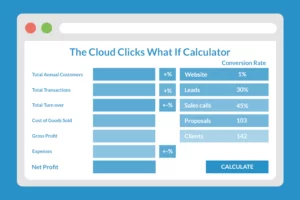The importance of mobile optimization for your website in 2023 cannot be overstated. With the proliferation of mobile devices for browsing and shopping, businesses must tailor their websites to accommodate this expanding user base. In this blog post, we will delve into various aspects that contribute to an effective mobile-optimized site.
Responsive web design is a crucial element in optimizing your site for mobile users, ensuring seamless navigation and mobile viewing across different screen sizes. We will also discuss how HTML5 can improve site structure and provide a positive user experience while minimizing accidental clicks.
Additionally, enhancing local SEO ( Search Engine Optimization) efforts through mobile optimization plays a vital role in reaching potential customers within specific regions. The importance of mobile optimization for your website in 2023 extends beyond just aesthetics; it encompasses factors such as page speed optimization and schema markup implementation to provide visually appealing search results with improved user engagement.
Lastly, we will explore tools available for identifying opportunities in mobile optimization and creating parallel websites exclusively designed for smartphone users, further catering to the ever-growing e-commerce market driven by these devices.
Responsive Web Design for Mobile Devices

In today’s digital world, having a mobile-optimized website is crucial to cater to the ever-growing number of mobile users. Creating a mobile-friendly site is one of the main importance of mobile optimization. A responsive web design ensures that your site looks and functions optimally on various screen sizes and devices, including smartphones, tablets, and any kind of mobile device. This not only enhances user experience but also helps save resources when search engines like Google crawl your site.
Mobile optimization refers to the process of designing and developing websites and online content to be responsive and user-friendly on mobile devices such as smartphones and tablets
Big and Easy Clickable Buttons
For mobile users, providing a seamless experience is key; thus, it’s important to incorporate large and easily clickable buttons on your website. These large touch targets make it easier for visitors to navigate through your content without accidentally clicking on the wrong link or button. Mobile-friendly websites also have features such as text-based phone numbers or email addresses that can trigger direct calls or email messages without the use of other applications. You can achieve this by using appropriate media queries in CSS, which adjust the size of elements based on screen size.
Large Text and Pictures

A key aspect of mobile optimization is ensuring that text, images, and other website elements are easily readable even on smaller screens. Pursuing a mobile-friendly site means having a mobile site that accurately displays on smaller screens. Using larger font sizes, shorter line lengths, adequate spacing between lines (also known as leading), you can enhance readability across different devices. Additionally, optimizing images with proper compression techniques will ensure they load quickly while maintaining visual quality.
Early Calls to Action
Incorporating early calls-to-action (CTAs) within your content is another important element in designing a responsive site optimized for mobile devices. As most people tend to scroll less while browsing websites on their phones or tablets compared to desktops/laptops; placing CTAs higher up increases visibility chances resulting in better conversion rates from potential customers visiting via these platforms.
Easy-to-use Forms
- Use clear labels and placeholders for form fields
- Group related fields together to improve readability
- Implement real-time validation to provide instant feedback on user input errors
- Avoid using dropdown menus where possible, as they can be difficult to navigate on smaller screens. Instead, opt for radio buttons or checkboxes.

Incorporating these design elements into your website will not only create a more enjoyable browsing experience for mobile users but also contribute positively towards your site’s search engine rankings. To top search rankings and stay competitive, businesses must dedicate resources towards crafting a mobile-friendly website as Google prioritizes such sites in its search results.
To ensure users have an optimal experience when visiting your website, regardless of mobile device used, implement responsive web design for mobile phones. To further optimize the user’s journey on your site, consider optimizing its structure with HTML5.
Optimizing Site Structure with HTML5
In the era of mobile devices, optimizing your website’s structure using HTML5 is crucial for providing a seamless browsing experience. By incorporating this latest version of HTML into your site design, you can minimize accidental clicks and improve the overall user experience on mobile platforms.

Minimizing Accidental Clicks
A common issue faced by users while navigating websites on their smartphones or tablets is unintentional clicking due to small touch targeting some proximity between elements. With HTML5, you can create responsive layouts, ensuring that buttons and links are appropriately sized and spaced apart for easy navigation on different screen sizes. This helps in reducing frustration caused by accidental actions during navigation.
Improved User Experience
Besides minimizing accidental clicks, employing HTML5 also offers various other benefits contributing to an enhanced user experience. Some notable features include:
- Semantic Elements: These allow search engines to better understand the content of your web pages, leading to improved SEO performance.
- Multimedia Support: The integration of audio and video elements without requiring third-party plugins makes it easier for users to access multimedia content across multiple devices.
- Cross-Browser Compatibility: Ensuring that your website looks consistent across different browsers increases its accessibility and usability for all visitors.
To further optimize your site structure for mobile devices, consider implementing techniques such as media queries within CSS stylesheets which adapt your website’s layout according to device-specific characteristics like screen size or resolution. Additionally, make use of online resources like Google’s Mobile-Friendly Test to analyze your website’s mobile optimization and identify areas for improvement.
Incorporating HTML5 into your website design not only helps in optimizing site structure but also contributes positively towards overall user experience, ultimately leading to higher engagement levels and higher search engine rankings. Utilize HTML5 when crafting or revamping your website to provide a great experience for mobile-oriented viewers.
Optimizing site structure with HTML5 is essential to ensure a smooth user experience, while also minimizing accidental clicks. Improving loading times for mobile users can further boost the user experience and help your website gain better visibility in search engine rankings.
Improving Page Speed for Mobile Users
In this digital age, having a swift page speed on your website is necessary to ensure good user experience and high search engine rankings. This can be achieved by focusing on several key aspects of mobile optimization, such as reducing graphics (including popups), having clean graphics with fast-loading pages, and splitting long sentences into shorter ones without keyword stuffing – instead, optimize images, title tags, and meta descriptions concisely.

Reducing Graphics & Popups
One way to improve the speed of your site on mobile devices is by cutting down on graphics and pop-ups that can impede browsing. Opt for simpler designs or compress images using tools like TinyPNG, which will help maintain visual appeal while decreasing file sizes.
Clean Graphics with Fast-Loading Pages
A well-designed website should prioritize both aesthetics and functionality. To achieve this balance, ensure that all elements are optimized for mobile users – from fonts to layout structure. Utilize CSS media queries to create a responsive design that adapts seamlessly across various screen sizes, providing an optimal viewing experience regardless of device type.
- Media Queries: Use these in your CSS code to apply different styles based on screen size or resolution.
- Optimizing Images: Compress image files before uploading them onto your site; this reduces their size without compromising quality significantly.
- Loading Scripts Asynchronously: Load JavaScript files asynchronously so they don’t block the rendering of your page’s content.
Concise Title Tags & Meta Descriptions
When optimizing for mobile SEO, it’s essential to keep title tags and meta descriptions short and sweet. With limited screen real estate on smartphones, users need concise information that quickly conveys the purpose of a webpage. To achieve this, focus on using relevant keywords without stuffing them into sentences – instead, create natural-sounding phrases that accurately describe the content within.
Incorporating these strategies will not only improve your website’s overall user experience but also show search engines like Google that you’re effectively answering searchers’ needs. By prioritizing mobile optimization in 2023 and beyond, businesses can stay ahead of the curve while catering to an ever-growing audience of mobile users.
Optimizing a website for the best possible mobile user experience can be achieved by enhancing page loading speed on mobile devices. Additionally, enhancing local SEO efforts through mobile optimization will help businesses reach a wider audience and increase visibility in search engine results pages.
Enhancing Local SEO Efforts through Mobile Optimization
In today’s digital landscape, mobile optimization plays a crucial role in enhancing local SEO efforts. With the importance of mobile optimization and usage for location-based searches increasing, it is vital to ensure that your website is optimized to cater to this growing demographic. By optimizing your site for mobile devices, you can provide customized experiences tailored specifically toward them at all times.

Dynamic Serving Techniques
Dynamic serving techniques allow you to display different content based on whether visitors are accessing desktop version of your site through desktops or mobile devices. This approach ensures that each user receives an optimal browsing experience regardless of their device type.
- Generate distinct HTML and CSS documents for desktop and mobile versions of the website.
- Detect user-agent strings from incoming HTTP requests and serve appropriate content accordingly.
- Maintain consistency in URL structure across both versions of the site.
Customized Experiences Across Platforms
To enhance local SEO performance further, consider implementing features such as click-to-call buttons or integration with mapping applications like Google Maps. These additions not only improve overall usability but also demonstrate responsiveness toward the unique needs of mobile users:
- Add a click-to-call button near important contact information so customers can easily get in touch with you directly from their phones.
- Integrate Google Maps into your website so potential clients can quickly locate nearby branches or offices without leaving the page they’re currently viewing – improving overall engagement levels while providing valuable location-specific data simultaneously.
By optimizing your website for mobile devices and incorporating these local SEO strategies, you can effectively cater to the needs of a growing audience that relies on their smartphones for location-based searches. In turn, this will help improve your overall search engine rankings and drive more targeted traffic toward your business.
By optimizing for mobile devices, businesses can significantly enhance their local SEO efforts and boost website traffic. Furthermore, creating parallel websites specifically designed for smartphone users will enable businesses to provide a customized experience across platforms that cater to the needs of this growing demographic.
Creating Parallel Websites Exclusively Designed for Smartphone Users
Given the prevalence of smartphone use for online activities, businesses must now focus on creating websites tailored to this audience. This shift in consumer preferences has necessitated businesses to provide tailored services for those utilizing smartphones. One effective way of doing this is by creating a parallel website exclusively designed for these users.

Catering to Smartphone Users
A mobile-optimized website ensures that your content is easily accessible and navigable on smaller screens, providing an optimal user experience. By having a separate site tailored specifically towards smartphone users, you can focus on delivering relevant information quickly while maintaining an attractive design suitable for smaller screen sizes. This approach allows you to maintain the integrity of your main website without compromising its performance or aesthetics.
Enhancing the E-commerce Experience
- Easy navigation: A mobile-specific site should have clear menus with large buttons that are easy to tap on touchscreens.
- Faster load times: Compress images and optimize code so pages load quickly even on slower connections – ensuring a seamless shopping experience across all devices.
- Simplified checkout process: Offer guest checkouts or social media logins, minimize form fields, and provide autofill options where possible – making it easier than ever before for customers to complete their purchases from anywhere at any time.
Incorporating these features into your parallel website will not only improve overall customer satisfaction but also boost conversion rates as shoppers find it increasingly convenient to browse through products using their smartphones instead of visiting traditional brick-and-mortar establishments. By investing in a mobile-optimized website, you can tap into the ever-growing market of smartphone users and stay ahead of your competitors in the digital space.
Creating a parallel website exclusively designed for smartphone users is an essential step to ensure your business stays competitive in the digital age. Utilizing tools such as Semrush can help you identify areas of improvement and capitalize on mobile optimization opportunities.
Utilizing Tools for Mobile Optimization Opportunities
In today’s competitive digital landscape, it is essential to identify and capitalize on mobile optimization opportunities. One way to make the most of mobile optimization prospects is by using a range of tools that can help you evaluate your website’s performance and detect potential areas for enhancement. In this section, we will discuss some of the most popular tools available for competitor research and mobile SEO analysis.

Competitor Research Using Semrush
Semrush is a powerful tool that allows you to conduct in-depth competitor research. By examining your rivals’ sites, you can acquire advantageous knowledge of their plans and strategies which can then be utilized to upgrade the presentation of your own site. Some features of Semrush include Organic Research, which provides information about organic search traffic; Keyword Gap Analysis, which helps identify keyword opportunities; and Site Audit reports that highlight potential issues with your website.
Identifying Long-Tail Keywords & Areas of Improvement
Focusing on long-tail keywords can significantly boost your website’s visibility among mobile users who tend to use more specific queries when searching online. To find these lucrative keywords, consider using tools like Ahrefs Keywords Explorer, Moz Keyword Explorer, or Ubersuggest by Neil Patel. These platforms allow you to discover question-based long-tail keywords related to your niche while also providing suggestions for optimizing content around them.
- Ahrefs Keywords Explorer: Offers comprehensive data on keyword search volume, competition, and more.
- Moz Keyword Explorer: Provides keyword suggestions along with metrics like organic CTR and priority score.
- Ubersuggest: A free tool that generates keyword ideas based on your seed keywords and provides useful insights such as search volume trends and SEO difficulty scores.
In addition to identifying long-tail keywords, these tools can also help you uncover areas where your website may need improvement in terms of mobile optimization. By examining elements like page load times, mobile optimization issues, website speed, or defective links, you can make educated choices regarding which aspects of your website require attention – ultimately leading to a more satisfactory user experience for those on mobile devices.
By utilizing the right tools, businesses can easily identify areas of improvement and capitalize on mobile optimization opportunities. With this knowledge in hand, business owners will have a competitive advantage to look into incorporating schema markup into their website for enhanced search results that will help improve user engagement.
Incorporating Schema Markup for Enhanced Search Results
By incorporating schema markup into your website, you can enhance search results by adding elements such as recipe stars – making them more visually appealing while providing valuable information at a glance. This helps improve user engagement levels across all platforms and contributes positively towards SEO performance.

Visually Appealing Search Results
Structured data, like schema markup, help search engines interpret the content of a website more accurately. By implementing schema markup, you can provide additional context and visual enhancements to your search results, such as rich snippets or knowledge graphs. By incorporating schema markup, you can make your search engine listings more noticeable and enticing for users to select.
- Rich Snippets: Rich snippets are small pieces of information displayed below the title tag in search engine result pages (SERPs). They may include star ratings, images, or other relevant details about the page’s content.
- Knowledge Graphs: Knowledge graphs are graphical representations of interconnected facts about entities like people, places, organizations, etc., displayed alongside SERPs when users perform searches related to those entities.
Improved User Engagement
By using schema markup, search results become more visually appealing and this encourages visitors to click through for further exploration. When visitors see visually appealing listings with detailed information provided upfront in SERPs – they’re more likely to click on them and explore further what you have to offer.
As mobile users continue to dominate the digital landscape, businesses need to optimize their websites for these devices. Incorporating schema markup is a powerful way of enhancing your search results and improving user engagement on both desktop and mobile platforms.
Frequently Asked Questions The Importance of Mobile-Optimisation for Your Website in 2023
Why is mobile optimization for websites import websites
Mobile optimization ensures your website provides a seamless user experience on smartphones and tablets. According to Statista, mobile devices accounted for over 60% of global internet traffic in 2021.With the majority of internet users accessing websites through mobile devices, optimizing your site for these platforms can improve user engagement, increase conversion rates, and boost search engine rankings. Google prioritizes mobile-friendly sites in search results in their mobile-first indexing.
Does mobile optimization help SEO?
Yes, mobile optimization significantly helps with SEO. Google has implemented a mobile-first indexing approach, meaning it primarily uses the mobile version of a site’s content to rank pages in search results. A well-optimized site for mobile devices will have better visibility on Google and other search engines, thus attracting more organic traffic.
Is creating a mobile-optimized website not important?
Creating a well-optimized mobile website is crucial in today’s digital age. As most users access the internet via their smartphones or tablets, having an unresponsive or slow-loading site can lead to high bounce rates and lost revenue opportunities. Mobile optimization enhances user experience, improves SEO performance and mobile page speed, and increases overall business success online.
Conclusion
Mobile optimization can be beneficial in helping you to extend your reach and make sure that your website looks great on all gadgets. By following the tips outlined above, you will be able to improve your website’s performance on mobile devices and create an optimal user experience for visitors accessing from their phones or tablets. Investing time into ensuring your site is properly optimised could pay off greatly with increased engagement and conversions.







